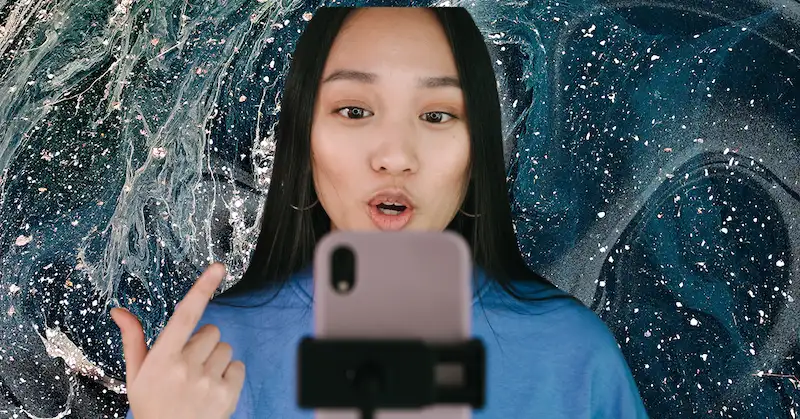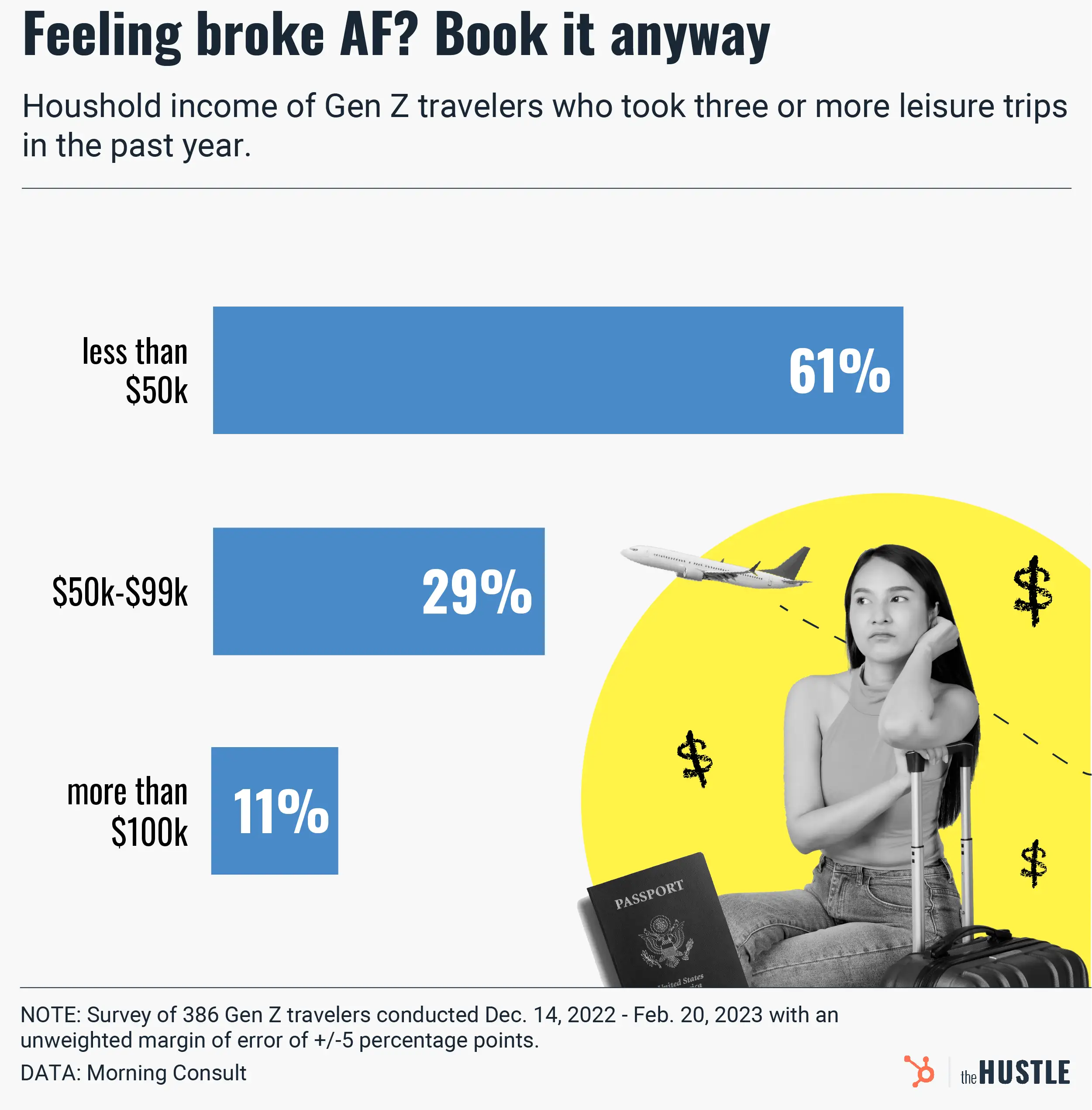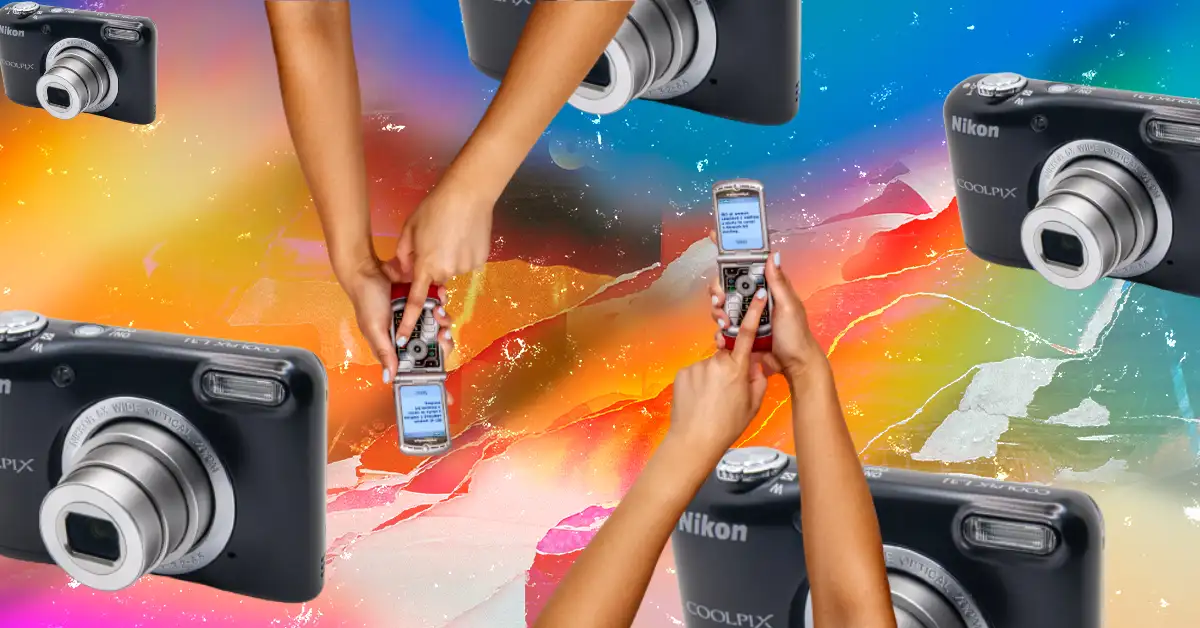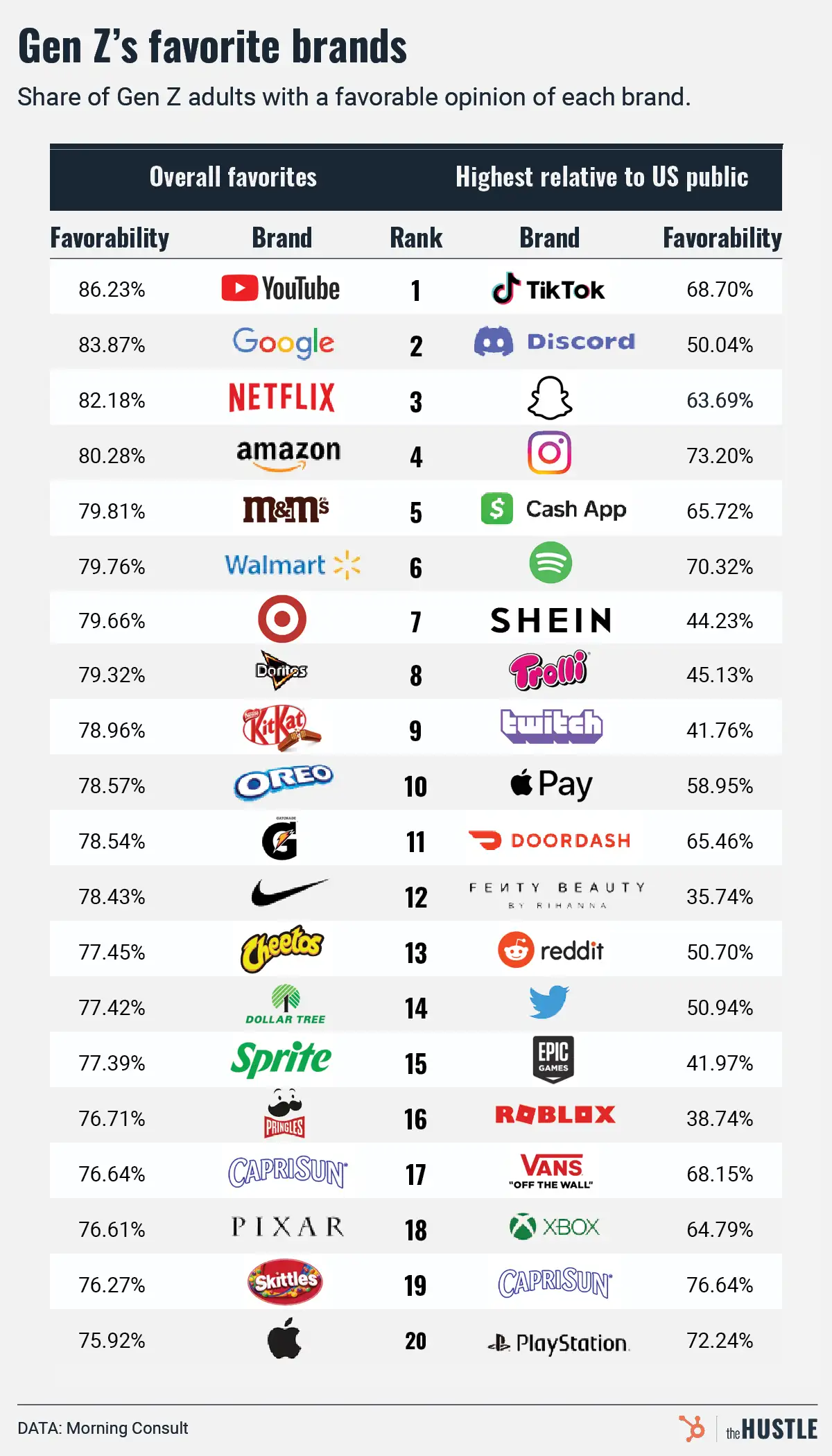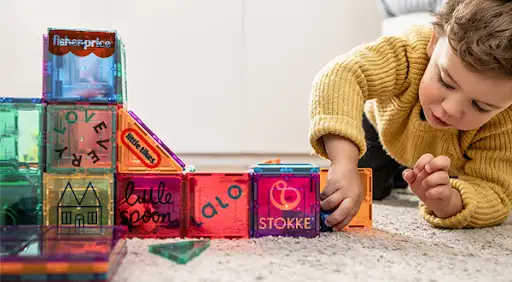What’s that phrase? Imitation is the sincerest form of… frugality?
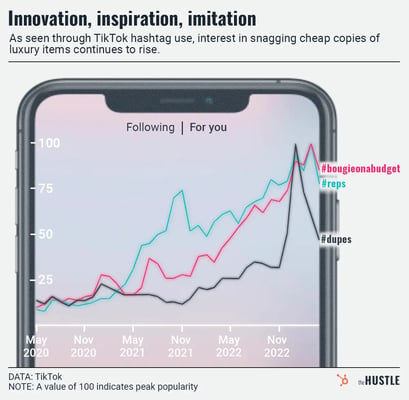
TikTok data suggests that sentiment is now shared across Gen Z — and in a world where you can either buy a genuine Chanel flap bag for $10.2k (up from $4.4k in 2012), or a $55 “dupe” on Chinese site DHgate, can you blame them?
Counterfeits: The real deal
Last year, an EU survey found that 37% of 15- to 24-year-olds purchased at least one fake product in the prior year — mostly accessories, footwear, electronics, and cosmetics — up from 14% in 2019.
- There was also a 6% jump in young shoppers who said they were influenced to make such a purchase.
Among the bogus-buying group, 48% said they did so because of price, 27% just didn’t give a damn about a product being fake, and 24% didn’t believe there was even a material difference from a genuine item.
Are you faux real?
Despite efforts to discourage counterfeit sales, TikTok appears to be the prime breeding ground for this behavior — and it happens to coincide with the platform’s expansion of its shopping functionality.
- This month, The Guardian reported that nine out of the first 12 results for “perfume” in TikTok Shop appeared to be fake.
The younger generation’s buy-in to thrifting, bargain-hunting, and, uh, “frugal flexing,” is readily on display on TikTok, with hashtags #reps (often meaning “replicas”) and #bougieonabudget up to 1.9B and 473m views, respectively.
One faux pas: Not everyone is on board with this trend, based on the drama that ensued when a popular TikToker and Hermès enthusiast was accused of trying to resell fake Birkin handbags (which start at $9k and sometimes go for six figures). The accuser was The Fake Birkin Slayer, a burgeoning whistleblowing Instagram account.


